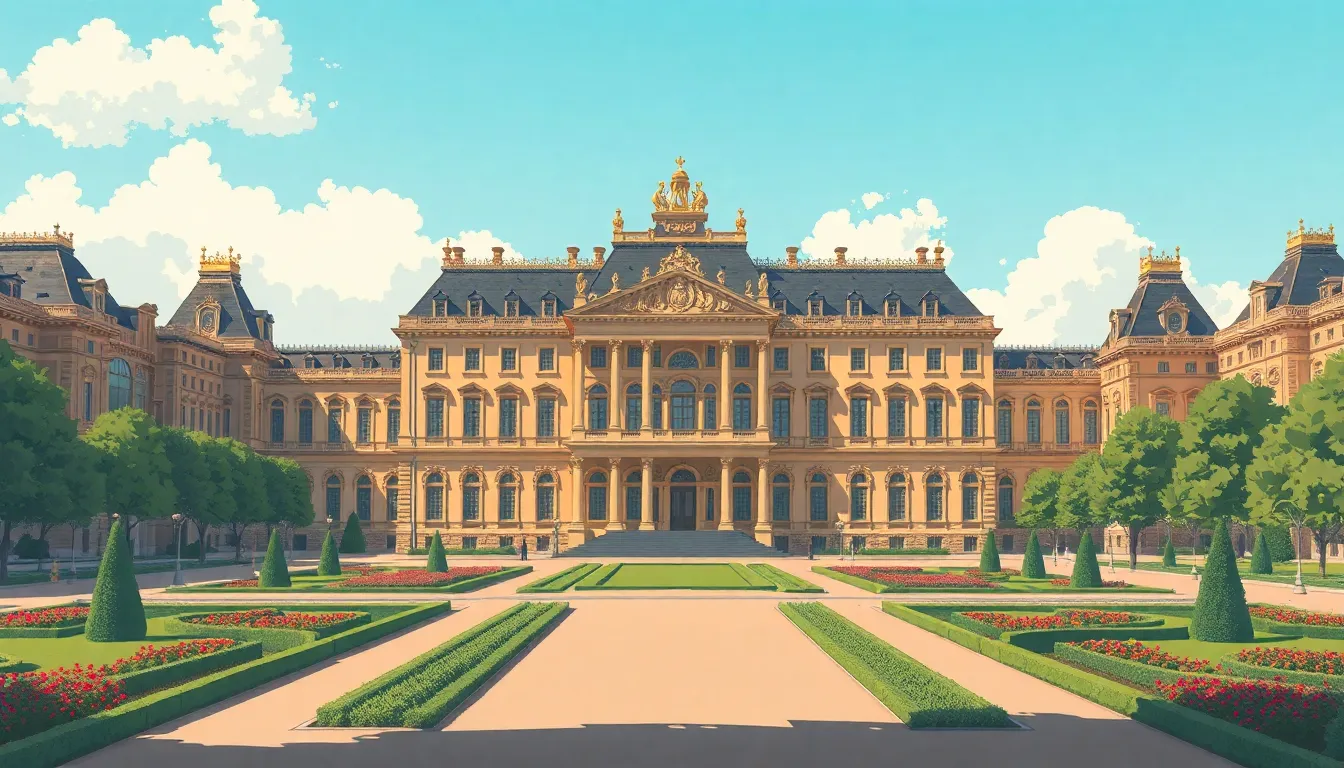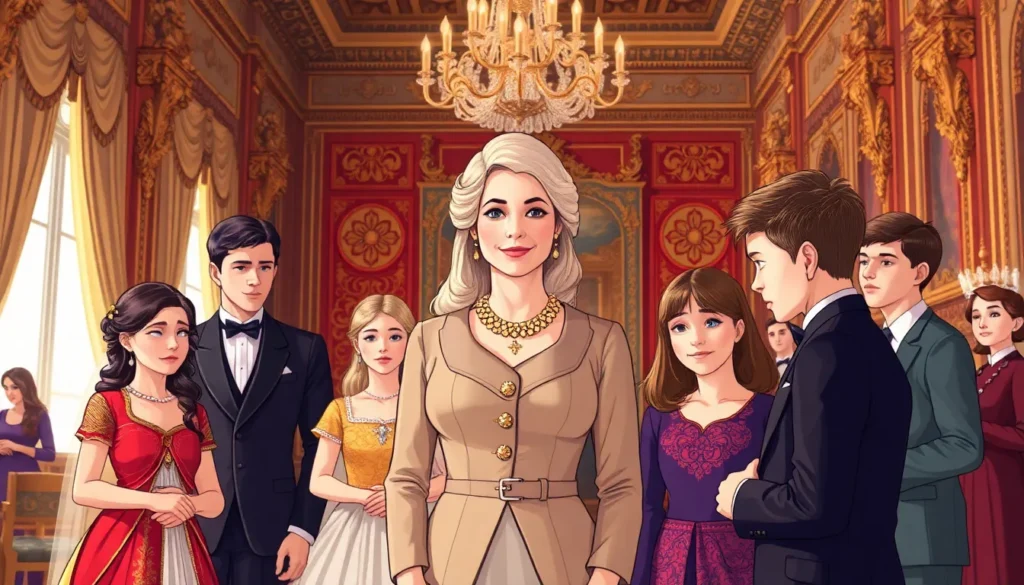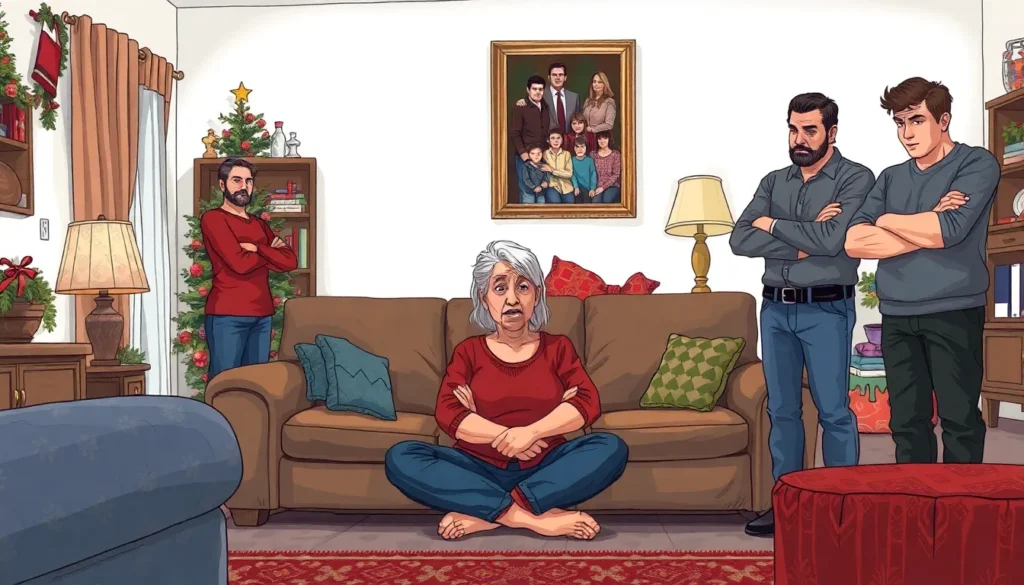Royal families are often seen as the epitome of elegance and grace, but behind those gilded doors lies a world of intrigue and drama. From sibling rivalries to power struggles, the dynamics within these royal households can rival any soap opera. Who knew that tiaras and royal duties could come with a side of family feuds and unexpected alliances?
royal family dynamics
Royal families exhibit complex dynamics that transcend societal expectations. Sibling rivalries often emerge in the face of competition for attention and titles. Power struggles frequently emerge, influencing decisions and relationships within the family unit. Family feuds, sometimes public, can overshadow more private matters, impacting their public image and connections.
Crisis moments frequently reveal hidden tensions. Unexpected alliances sometimes form in response to external pressures, highlighting strategic thinking within royal households. Shared responsibilities contribute to a sense of duty, yet individuals must navigate personal ambitions as well. This balancing act plays out against a backdrop of historical significance, where the past informs current behaviors and interactions.
Media scrutiny can amplify family tensions. Public perceptions may skew based on sensational reporting, which influences how the family portrays unity or discord. Family members often engage in public appearances together to project solidarity, masking underlying issues. Personal relationships among members might shift due to media narratives, reshaping their perspectives on each other.
Tradition plays a significant role in guiding family dynamics. Adhering to established norms can create friction, especially among younger generations who seek to innovate. To maintain relevance and public favor, royal families must adapt while respecting longstanding legacies. Understanding these dynamics sheds light on the complexities of their lives, revealing that the realities faced by royals can be as compelling as fiction.
Historical Context

Royal family dynamics have roots in a rich and complex history. Various factors, including evolution of monarchy and key historical events, significantly shape these relationships.
Evolution of Monarchy
Monarchy evolved from tribal and feudal systems to centralized governance. In early societies, rulers often gained power through military strength and lineage. Over centuries, absolute monarchies transitioned into constitutional systems, limiting royal authority. This shift introduced new dynamics within families, where influence shifted from individual rulers to parliamentary systems. Sibling rivalries emerged as heirs competed for a diminishing share of power and status. Social changes in the 20th century further altered family roles, encouraging monarchs to adopt more relatable personas. Today, modern royals balance tradition with public expectations, leading to complex interactions that reflect both historical legacies and contemporary issues.
Key Historical Events Influencing Dynamics
Several key historical events have shaped royal family dynamics. The English Civil War dramatically altered perceptions of monarchy, illustrating vulnerabilities of absolute power. In contrast, the fall of the Ottoman Empire redefined royal roles in a changing world. Events like World War I caused fragmentation of royal families across Europe, often leading to political realignments. The abdication crisis of Edward VIII showcased personal desire conflicting with duty, influencing subsequent generations. Additionally, the rise of social media transformed how royal families communicate, inviting public scrutiny and reshaping family interactions. Each event has left a lasting imprint on royal households, reflecting ongoing struggles between tradition and modernity.
Current Royal Family Dynamics
Royal families exhibit intricate dynamics characterized by defined roles and external perceptions that shape their public image.
Roles Within the Family
Roles within royal families often create a structured hierarchy. Each member has specific duties tied to tradition, service, and representation. Eldest children typically prepare for leadership roles, while younger siblings often find themselves navigating secondary responsibilities. The Queen or King symbolizes continuity and stability, acting as a focal point for unity. In contrast, spouses of royals may take on advocacy roles, influencing social issues. Retreats and family gatherings emphasize the importance of communication and collaboration. Sibling interactions can foster camaraderie or rivalry, impacting overall family dynamics. Ultimately, the balance between tradition and modern expectations influences how roles evolve.
Public Perception and Media Influence
Public perception of royal families hinges on media narratives. Royal duties and personal lives receive extensive coverage, often leading to intense speculation. Media outlets amplify stories, which can distort public understanding of private issues. Major events like marriages and births captivate audiences, shaping favorable impressions. Detractors may exploit controversies, generating negative attention. Royal members frequently engage in public appearances to enhance their image, presenting a unified front despite underlying tensions. Social media platforms add another layer of scrutiny, making transparency vital. Overall, navigating public perception intertwined with media influence plays a critical role in maintaining a royal family’s reputation.
Challenges Faced by Royal Families
Royal families encounter numerous challenges that complicate their unique position in society. Internal conflicts stem from complex relationships, while external pressures arise from public expectations.
Internal Conflicts and Relationships
Sibling rivalries often manifest as competition for power and status. Each member of a royal family navigates pre-defined roles, which can lead to tensions. Communication styles may differ, resulting in misunderstandings. Conflicts can escalate when personal aspirations clash with family duties. Trust issues frequently surface, especially during moments of crisis. Bonds may strain under the weight of public scrutiny. Resentments can fester when family members feel overshadowed by their peers. Disagreements over tradition versus modernity may lead to friction among generations. Overall, these dynamics showcase the intricate relationships within royal households.
External Pressures and Expectations
Media scrutiny intensifies external pressures faced by royal families. Public expectations demand adherence to tradition while calling for modernization. Coverage of personal lives can distort realities, fueling controversy. Major events like weddings and births quickly become focal points for public interest, impacting family dynamics. Members balance their private lives with public personas, often leading to conflicts. Expectations demand royal members project unity, even when facing challenges. Social media amplifies attention on royal families, influencing perceptions significantly. As a result, navigating these external pressures remains crucial for maintaining a favorable reputation.
Future of Royal Family Dynamics
Royal family dynamics are poised for significant evolution. Communication methods will shift as social media becomes even more integral. Each member may adopt distinct online personas, fostering unique ways to engage with the public. Younger generations will likely embrace modern practices, challenging long-standing traditions.
Power dynamics could also experience transformation. With decreased roles in governance, royal members might emphasize charitable initiatives. Increased public scrutiny ensures that royal actions remain transparent, enhancing accountability. Trust among family members becomes crucial during crises, influencing how they navigate public and private challenges.
Media narratives will evolve alongside these shifts. Coverage may transition from sensationalist portrayals to deeper explorations of individual stories. Attention to mental health will likely gain prominence, reflecting broader societal conversations. Family therapists and public relations experts may work closely with royals to improve their public image.
Public expectations will amplify the need for authenticity. Royal families might prioritize genuine interactions, cultivating relationships with community members. This approach could lead to enhanced public support and loyalty. Children raised in royal households are expected to balance tradition with modern values.
Tradition will remain a cornerstone, yet reinterpretation will be essential. Engaging in contemporary issues may resonate more with younger audiences. This balance between heritage and innovation may strengthen royal families’ relevance in modern society. Adaptations will become necessary for maintaining legacy while appealing to current expectations.
Overall, royal family dynamics will continue to fascinate as they navigate the complexities of tradition versus modernity. Enhanced public discourse around their roles will shape their futures decisively.
Conclusion
Royal family dynamics are a captivating blend of tradition and modernity. The ongoing evolution of these households reflects the challenges they face in balancing public expectations with personal aspirations. As younger generations seek to redefine roles and engage with the public, the tension between maintaining legacy and embracing change becomes more pronounced.
Media scrutiny will continue to play a pivotal role in shaping perceptions, influencing how royal families navigate their intricate relationships. The future promises further transformation as authenticity takes center stage, compelling royal members to foster genuine connections with their communities. Ultimately, the complexities of royal family dynamics will remain a source of intrigue as they adapt to a rapidly changing world.



